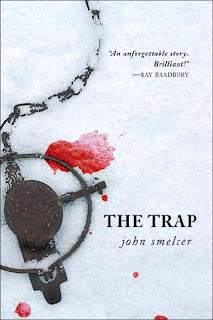 In “Dork in Disguise” readers are introduced to Jerry Flack, a bona fide dork complete with glasses, an interest in science, and complete ignorance of social skills and pop culture. In the first book Jerry briefly tried to pass himself off as a cool person, but since then he has learned a little more about how to handle himself in public, and has found his own circle of friends without having to change himself to please the “cool kids.”
In “Dork in Disguise” readers are introduced to Jerry Flack, a bona fide dork complete with glasses, an interest in science, and complete ignorance of social skills and pop culture. In the first book Jerry briefly tried to pass himself off as a cool person, but since then he has learned a little more about how to handle himself in public, and has found his own circle of friends without having to change himself to please the “cool kids.”When Brenda, one of his new friends and a fellow science club member, suggests that Jerry run for sixth grade president he is a little skeptical. But then Jerry takes a look at the ballot. The other candidate so far is Gabe Marshall, a cool jock known for his looks and brashness, but not for intelligence. Gabe’s campaign platform has the goal of eliminating late rules and putting video games in the detention room.
Jerry has much better plans for the school, but to make them reality he will have to run for president himself, and that means running against Gabe and his cool friends and supporters. Somewhat reluctant, but still determined Jerry enters his name in the ballot.
Little does Jerry realize, but this will be a decision that he will regret before long. Soon Gabe and his friends begin playing a series of devious tricks to make Jerry Flack look foolish. Among other things they distribute humiliating pictures of Jerry crashing while ice skating and screaming in terror while Gabe and his friends hang him out a second story school window.
Before long Jerry is the subject of all the school jokes. It appears that his campaign is doomed to failure, but there is something that Jerry can do to turn this humiliation around, if he can just figure it out in time.
“Dork on the Run,” is another great installment in the Jerry Flack series by Carol Gorman. Carol Gorman does a marvelous job portraying the complex dynamics of the middle school environment, with its conflicting cliques and dramatic personalities.
Jerry is an amusing character that will quickly gain the sympathy of readers. His personality, though geeky, is cool at the same time, and that is the point of the entire series.
I recommend “Dork on the Run” to all young readers.
Inkweaver Book Rating:
 Plot
Plot Characters
Characters Presentation
Presentation Overall
Overall















